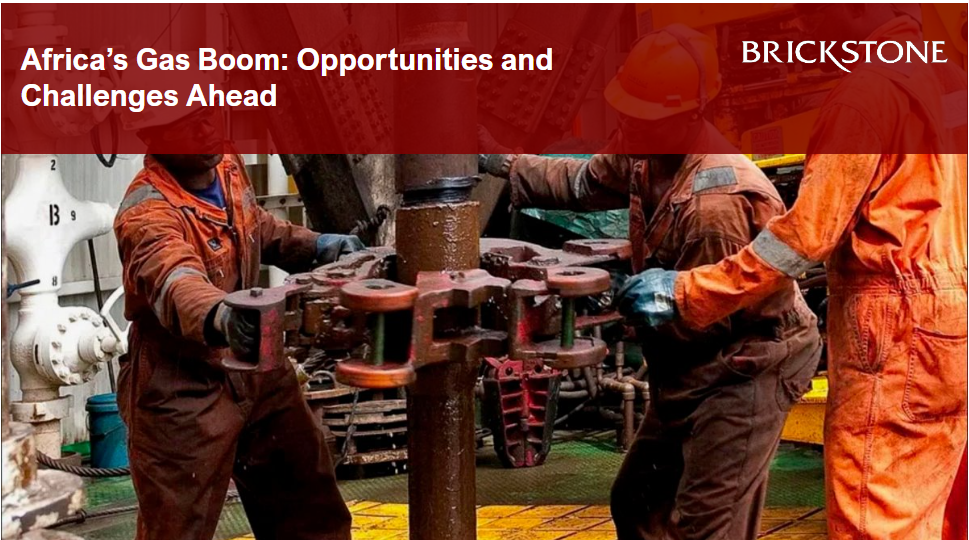Africa’s Gas Boom: Opportunities and Challenges Ahead
Africa’s Gas Boom: Opportunities and Challenges Ahead
The Scramble for Africa’s Gas report presents a comprehensive analysis of the significant investments planned to expand gas infrastructure across Africa. With $245 billion in planned investments, the report highlights the risks associated with these projects, particularly the potential for stranded assets, as much of the development is being driven by Europe’s short-term energy needs in response to the Russian invasion of Ukraine. This massive investment, covering gas pipelines, liquefied natural gas (LNG) export terminals, and gas-fired power plants, raises critical questions about Africa’s long-term energy future, especially in the context of the global push toward renewable energy.
The report starts by outlining the substantial investments being made in gas infrastructure, including LNG export terminals and gas pipelines across countries such as Nigeria, Mozambique, and Tanzania. While these projects are seen as lucrative in the short term due to Europe’s increasing demand for non-Russian gas, the report emphasizes the inherent risks of these investments becoming stranded assets once European energy policies shift towards greener alternatives. The report identifies the disparity between the focus on gas exports and the underinvestment in Africa’s own domestic energy generation needs, particularly renewable energy, which is crucial for the continent to achieve universal access to clean, affordable, and reliable energy.
The report provides detailed data on the scope and scale of the investments in Africa’s gas infrastructure. The total capital expenditure for LNG terminals in development stands at $103 billion, with 92% of this figure allocated for LNG export terminals, and only 8% set aside for LNG import terminals. Countries such as Nigeria, Mozambique, and Tanzania are leading in terms of proposed and ongoing projects, with Nigeria aiming to increase its export capacity by 24 million tonnes per annum (mtpa). This is part of a larger trend in which Africa’s existing 79.3 mtpa LNG export capacity is expected to grow by 111%. While this expansion may benefit Europe in the short term, the report underscores the relatively little impact it will have on electrification efforts within Africa itself, where large portions of the population still lack access to electricity.
The report also delves into the current state and future potential of Africa’s gas pipelines. With 23,932 kilometres of gas pipelines in development, Africa is witnessing a major buildout in this sector. However, only a small portion of these pipelines are currently under construction, with most still in the proposal phase. Nigeria, South Africa, and Mozambique are the primary actors in this space, with Nigeria’s Trans-Nigeria Gas Pipeline, a 1,427-kilometer project, under construction and expected to connect to the proposed Trans-Sahara Gas Pipeline for gas exports to Europe. While these pipelines offer economic opportunities, they pose challenges related to financing, with only $4 billion of the estimated $89 billion needed for these pipeline projects secured.
In the electricity generation sector, Africa’s reliance on gas-fired power plants is notable. The report points out that gas accounts for 40% of the continent’s total power generation capacity, with 109 gigawatts (GW) of gas-fired power plants currently in operation. North Africa, particularly Egypt and Algeria, dominates this capacity, while Nigeria and Libya also hold significant shares. However, despite these investments, African countries like Nigeria face significant electricity shortages, largely due to infrastructure constraints and inadequate supply. As part of ongoing development, there are 64.2 GW of gas-fired power plants in the pipeline, but only 10.5 GW is currently under construction, reflecting the slow pace of progress in addressing Africa’s electricity access gap.
A key theme of the report is the tension between developing gas infrastructure for export versus addressing domestic energy needs. While Africa’s gas resources are being developed primarily for export markets, particularly to Europe, many African countries are grappling with low electrification rates. For instance, in Tanzania, only 40% of the population has access to electricity, and in Mozambique, this figure drops to 31%. The report argues that prioritizing export infrastructure over domestic energy needs could leave African countries with stranded assets and undermine efforts to improve electricity access for their populations.
The report also highlights the involvement of state-owned enterprises in Africa’s gas infrastructure projects. In countries like Nigeria and South Africa, state-owned companies such as the Nigerian National Petroleum Corporation (NNPC) and Transnet are leading the way in pipeline development. This presents opportunities for state-driven development but also exposes these countries to significant financial risks, particularly if global demand for gas declines due to the energy transition. The report suggests that while Africa has vast gas resources, its reliance on fossil fuel infrastructure may hinder the continent’s ability to transition to cleaner energy sources.
The concluding section of the report stresses the risks posed by investing heavily in fossil fuel infrastructure at a time when the global energy market is shifting towards renewables. The report calls for a re-evaluation of these investments, urging African governments and international investors to focus more on renewable energy projects that can provide long-term benefits for Africa’s energy security. The scramble for gas may provide short-term economic gains, but without careful planning, Africa could be left with underutilized infrastructure that fails to address the continent’s broader energy needs.
In summary, The Scramble for Africa’s Gas provides a thorough analysis of the ongoing gas infrastructure developments in Africa, with a particular focus on the risks of stranded assets and underinvestment in domestic energy access. The report raises important questions about the long-term sustainability of Africa’s energy strategy, especially in light of global efforts to reduce reliance on fossil fuels. It calls for a more balanced approach that considers both the immediate economic opportunities presented by gas exports and the long-term need for renewable energy to power Africa’s growth.
This article by Brickstone reviews Global Energy Monitor’s publication on The Scramble for Africa’s Gas.
Read the complete publication here.
.





